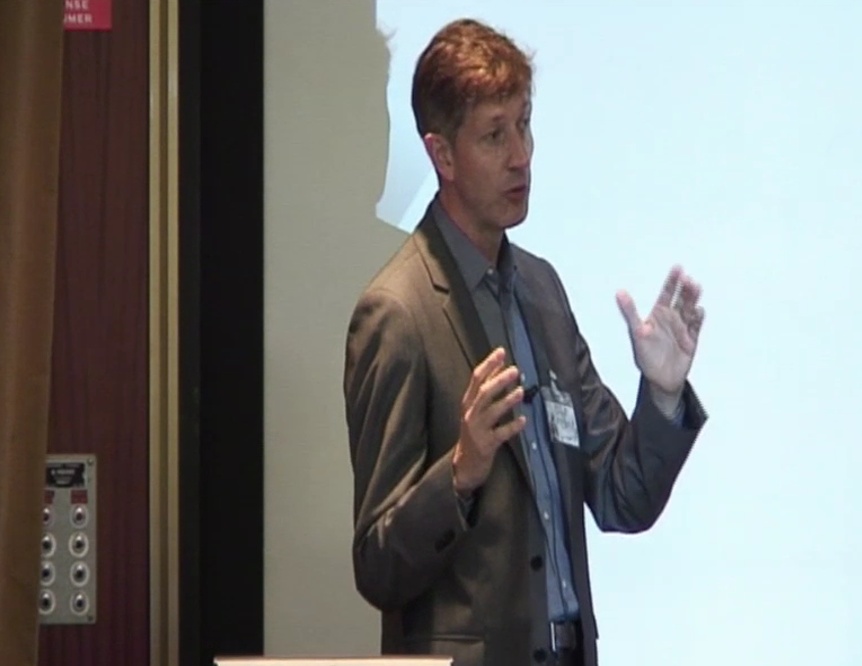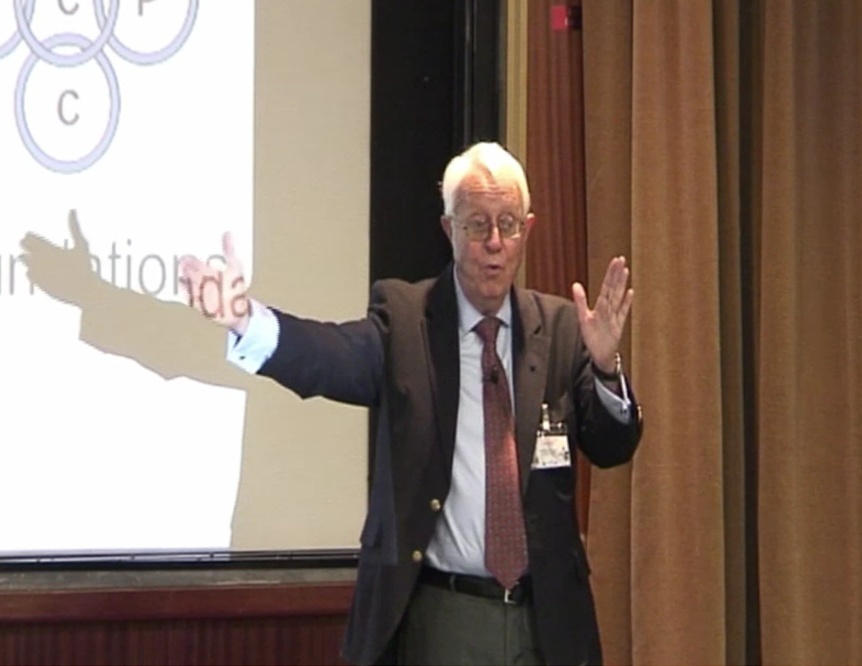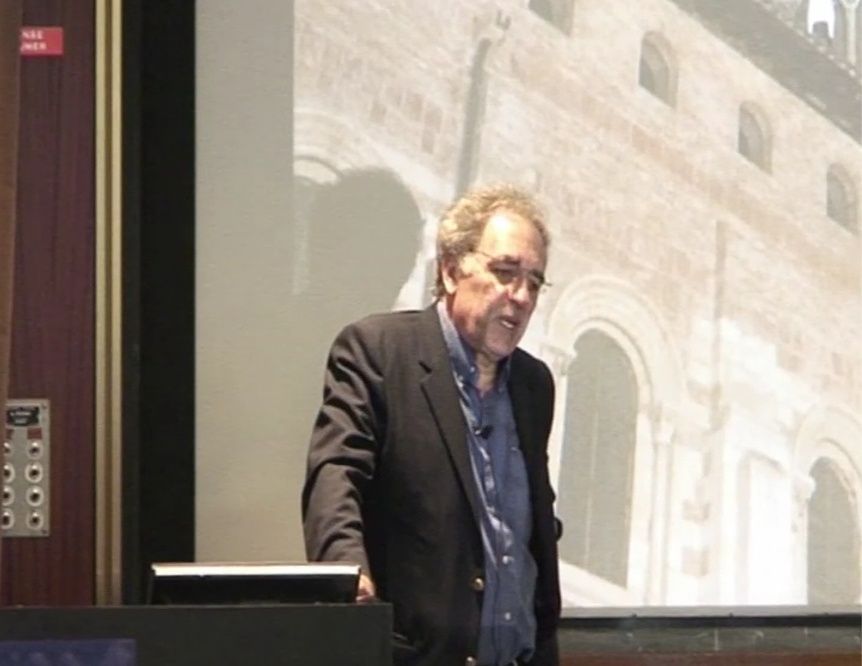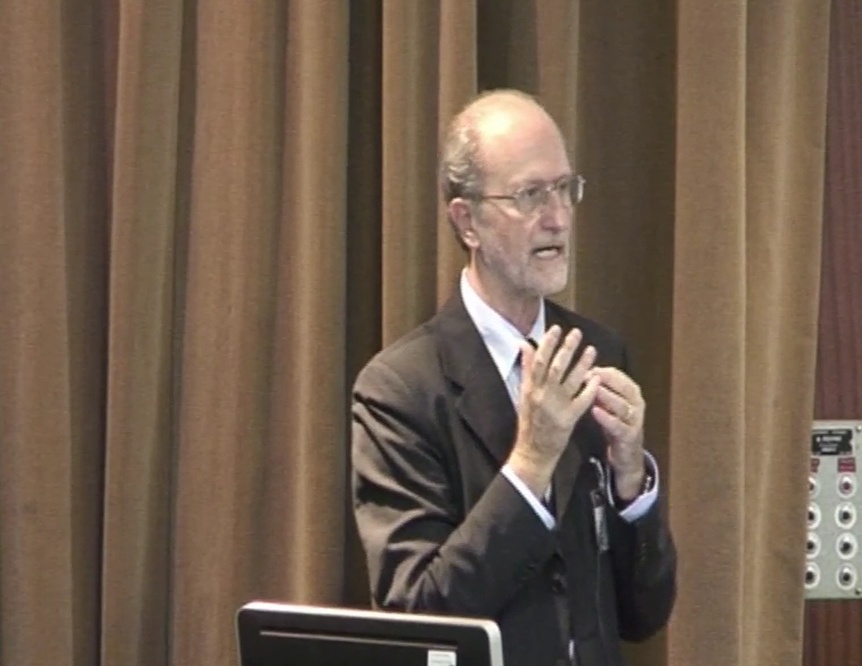Archives > Archives 2013
|

|
Le Human Brain Project: Chances et défis pour l'informatique
par Marc-Olivier Gewaltig
Ecole Polytechnique Fédérale de Lausanne, Switzerland
Co-director of the EU FET Flagship «Human Brain Project»
Leader of the Neurorobotics Section of the Blue-Brain Project, EPFL
Le 28 octobre 2013 |
|
Recently, the European Commission selected the Human Brain Project (HBP) as one of two Flagship projects, each receiving a prospected funding of 1 billion euro. The Human Brain Project builds on the foundations of the Blue Brain Project which was founded in 2005 with the mission to integrate anatomical, electrophysiological and genetic data into a unified model of the neocortical column.
Over the course of 10 years, the HBP will create an integrated system of six ICT platforms, dedicated to Neuroinformatics, Brain Simulation, Medical Informatics, High Performance Computing, Neuromorphic Computing, and Neurorobotics. These platforms will lay the foundation for a new kind of ICT based brain research. Three of the HBP platforms are dedicated to investigating novel, brain-derived technologies for future computers and computer science. The High-Performance Computing Platform will use brain-derived principles to design the next generation of super-computers. The Neuromorphic Computing Platform investigates how brain-derived principles can be directly embodied in new computing hardware. Finally, the Neurorobotics Platform will allow researchers to use and explore brain models in simulated closed-loop robotics experiments.
In this talk I will give an overview of the Human Brain Project. I will then describe in more detail the preparatory research for the Neurorobotics Platform, on the basis of the pioneering work of the Blue Brain Project. Along the way, I will summarize the challenges and opportunities the Human Brain Project offers to computer science.
|
| |
|
|

|
Apprentissage: nouveaux défis et opportunités
par Francis Bach
Inria, Ecole Normale Supérieure, Paris, France
Awarded by a grant of the European Research Council
Le 28 octobre 2013
|
The talk discusses recent developments within the machine learning community that are tailored to modern large-scale problems.
(1) In supervised learning problems with many observations, online algorithms such as stochastic gradient descent which pass over the data only once, are usually preferred over batch algorithms, which require multiple passes over the data. Recent work are presented, showing that simple improvements leads to algorithms that are several orders of magnitude faster.
(2) In unsupervised learning problems, learning appropriate representations (such as principal component analysis or K-means) can be generalized to take into account the natural structures of the problem at hand, leading to both better predictive performance and enhanced interpretability. |
| |
|
|

|
Contrôles - Une perspective
par Karl Johan Åström
Professor, University of Lund , Sweden
IEEE Medal of Honor
Member of the Royal Swedish Academy of Science
Le 28 octobre 2013
|
| Even if feedback was used in ancient times it is reasonable to say that the field of control appeared in the mid 1940s. Control was the first systems field. It represented a paradigm shift in engineering. An holistic but primitive view of control systems emerged in the 1950s and the International Federation of Automatic Control (IFAC) was formed. Education in control spread rapidly to practically all engineering disciplines. It is, however, still difficult to fit control into a traditional structure divided into Mechanical, Electrical and Chemical Engineering and the field is still struggling with this issue. The second phase, starting in the 1960s, was characterized by a very strong progress in control theory driven by the space race and the emergence of computer control. Theory developed dramatically as did the industrial applications. A large number of sub-specialties appeared but the holistic view of the field was unfortunately lost. In my opinion we are now entering a third phase driven both by ubiquitous computing and networks and a strong interest in feedback and control among our fellow scientists particularly in Physics and Biology. What will happen is largely dependent on how the control engineers and scientists respond to these challenges. The lecture will present some of the key ideas in the development of the field, it will give a glimpse of the rich industrial applications and it will end with a few reflections about the future evolution. Important issues are interactions with other fields and education. |
| |
|
|

|
Théorie des jeux, cancer et la galaxie de la Mort
par Robert H. Austin
Professor, Princeton University, US
Member of the National Academy of Sciences USA
2005 Edgar Lilienfeld Prize of the American Physical Society
Le 28 octobre 2013
|
| Game Theory has interesting implications for the competing strategies of cells fighting for survival in a cancer patient. The talk starts with a very short tutorial on Game Theory, follows up with Robert's work using microfabricated ecologies that can accelerate evolution, and concludes with the possibilities towards a serious synthesis of Game Theory and cancer at a quantitative, testable level. |
| |
|
|

|
Science et ingénierie de la Biorobotique: la vision des robots compagnons assistants
par Paolo Dario
Scuola Superiore Sant'Anna, Pisa , Italy
Director of The BioRobotics Institute, Pisa, Italy
Le 28 octobre 2013
|
| Europe faces a number of challenges that require new, science-grounded technology to promote economic growth, sustain the cost of welfare and enable an aging population to remain active and live independent lives. The development of high performance, complex artificial systems, like robots, as Companions for Assisted Living may require design methods and enabling technologies not presently available nor reachable by merely applying current engineering paradigms. Major scientific and engineering breakthroughs are needed to develop new types of artifacts that are safe, social, dependable, sustainable and skilled, literally going beyond the current mechatronics paradigm. Nature can be an extraordinarily rich and matchless reference for inspiring, conceiving and designing novel robotic systems. This approach is increasingly recognized by scientists and engineers as a valuable, winning strategy in order to push engineering frontiers beyond the threshold of traditional design and technology, as well as to develop new and more effective tools to elucidate scientific problems. If wisely pursued and exploited, biomimetics and bioinspiration – which are the foundation for biorobotics - have the potential to lead to disruptive innovations in science and engineering. Developing this new generation of robots intended to serve humans while being acceptable, affordable and dependable, will require the mobilization of multidisciplinary scientific excellence, new multi-functional materials and morphologies endowed with structural intelligence, novel engineering design methods and solutions, and novel methodologies addressing soft human-robot co-existence. This lecture introduces the theoretical framework of biorobotics and discusses its many implications and a number of applications, from components to robotic systems, aimed at assisting human life at all ages, from infants to elderly. |
|

